922404
N4,N4′-Bis(4-(6-((3-ethyloxetan-3-yl)methoxy)hexyl)phenyl)-N4,N4′-diphenylbiphenyl-4,4′-diamine
≥97% (HPLC)
Sinónimos:
OTPD
Iniciar sesiónpara Ver la Fijación de precios por contrato y de la organización
About This Item
Fórmula empírica (notación de Hill):
C60H72N2O4
Número de CAS:
Peso molecular:
885.22
Número MDL:
Código UNSPSC:
12352116
NACRES:
NA.23
Productos recomendados
Nivel de calidad
Análisis
≥97% (HPLC)
solubilidad
chloroform: soluble
dichloromethane: soluble
toluene: soluble
fluorescencia
λem 410 nm±10 nm in dichloromethane
Energía orbital
HOMO 5.34 eV
LUMO 1.9 eV
λ
in dichloromethane
Absorción UV
λ: 308 nm±5 nm Amax
λ: 353 nm±5 nm Amax
Aplicación
N4,N4′-Bis(4-(6-((3-ethyloxetan-3-yl)methoxy)hexyl)phenyl)-N4,N4′-diphenylbiphenyl-4,4′-diamine (OTPD) is a solution-processable Hole Transport / Electron Blocking Layer (HTL / EBL) material popularly used in optoelectronic devices, such as diodes and solar cells .
N4,N4′-Bis(4-(6-((3-ethyloxetan-3-yl)methoxy)hexyl)phenyl)-N4,N4′-diphenylbiphenyl-4,4′-diamine can be used in studies of organic light-emitting diodes (OLEDs) and organic photovoltaic (OPV) devices as a hole transport material. Its favorable charge transport characteristics make it suitable for enhancing the charge collection efficiency and overall power conversion efficiency of OPV devices.
Código de clase de almacenamiento
10 - Combustible liquids
Clase de riesgo para el agua (WGK)
WGK 3
Punto de inflamabilidad (°F)
Not applicable
Punto de inflamabilidad (°C)
Not applicable
Certificados de análisis (COA)
Busque Certificados de análisis (COA) introduciendo el número de lote del producto. Los números de lote se encuentran en la etiqueta del producto después de las palabras «Lot» o «Batch»
¿Ya tiene este producto?
Encuentre la documentación para los productos que ha comprado recientemente en la Biblioteca de documentos.
Highly efficient solution-processed phosphorescent multilayer organic light-emitting diodes based on small-molecule hosts
Rehmann, Nina, et al.
Applied Physics Letters, 91, 103507/1-103507/3 (2007)
Photopatterning of crosslinkable hole-conducting materials for application in organic light-emitting devices
Bacher, Erwin, et al.
Macromolecular Rapid Communications, 25, 1191-1196 (2004)
New crosslinkable hole conductors for blue-phosphorescent organic light-emitting diodes
Zacharias, Philipp, et al.
Angewandte Chemie (Weinheim an der Bergstrasse, Germany), 46, 4388-4392 (2007)
Inverted perovskite solar cells with inserted cross-linked electron-blocking interlayers for performance enhancement
Jhuo, Hong-Jyun, et al.
Journal of Material Chemistry A, 3, 9291-9297 (2015)
Highly efficient polymeric electrophosphorescent diodes
Yang, Xiaohui, et al.
Advanced Materials, 18, 948-954 (2006)
Nuestro equipo de científicos tiene experiencia en todas las áreas de investigación: Ciencias de la vida, Ciencia de los materiales, Síntesis química, Cromatografía, Analítica y muchas otras.
Póngase en contacto con el Servicio técnico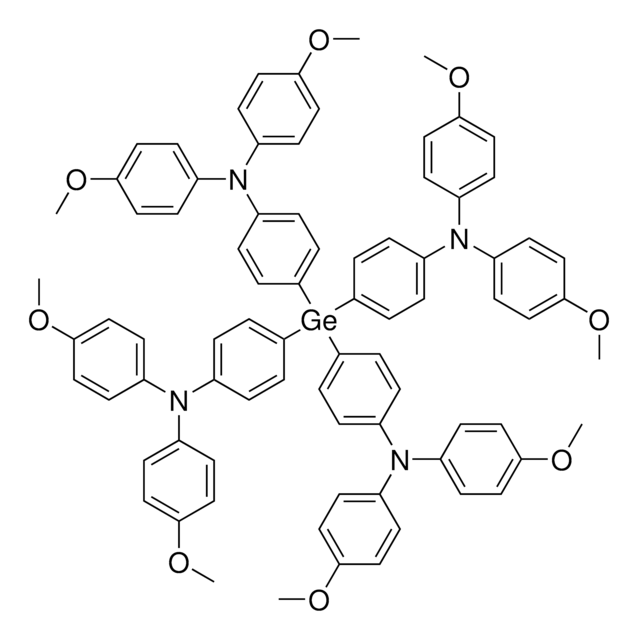
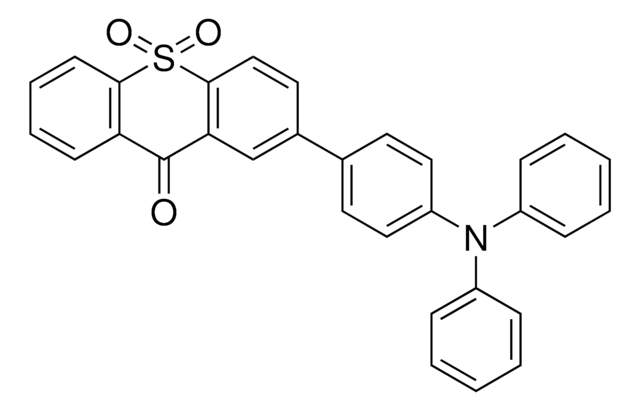
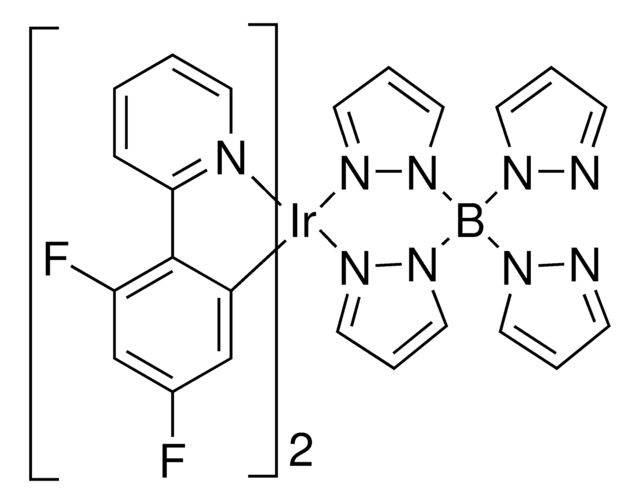
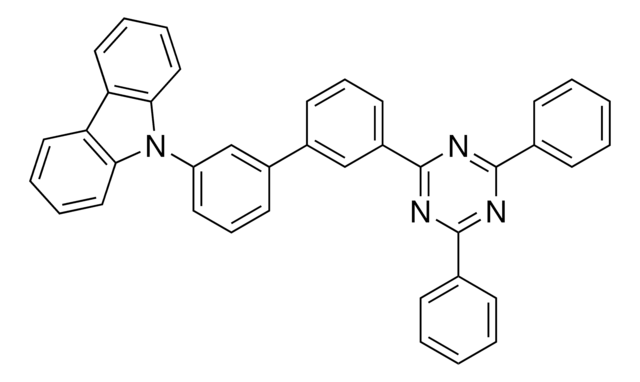
![Tris[2-phenylpyridinato-C2,N]iridium(III) 97%](/deepweb/assets/sigmaaldrich/product/structures/167/234/658d0b76-d31d-4fd5-8041-e04e207227c9/640/658d0b76-d31d-4fd5-8041-e04e207227c9.png)

![Di-[4-(N,N-di-p-tolyl-amino)-phenyl]cyclohexane ≥97% (HPLC)](/deepweb/assets/sigmaaldrich/product/structures/111/787/16bde1ce-c76d-46d6-9e1f-9ce09f82d038/640/16bde1ce-c76d-46d6-9e1f-9ce09f82d038.png)
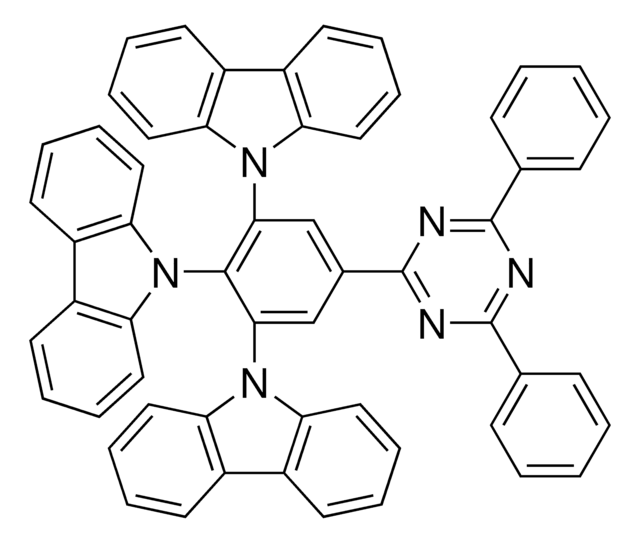

![5H-Pyrido[3,2-b]indole](/deepweb/assets/sigmaaldrich/product/structures/298/461/71e4728f-198c-4105-965b-654071026ab4/640/71e4728f-198c-4105-965b-654071026ab4.png)